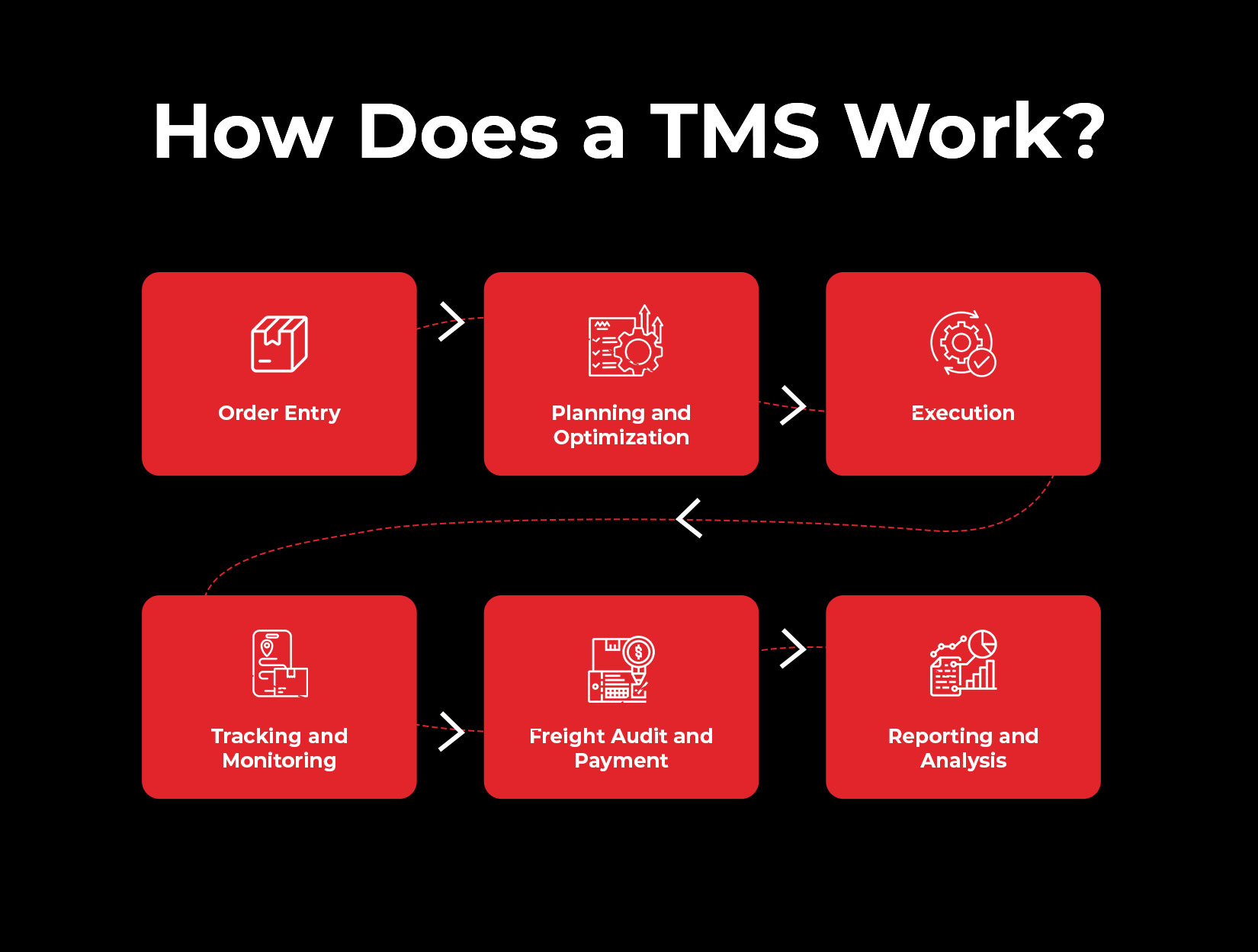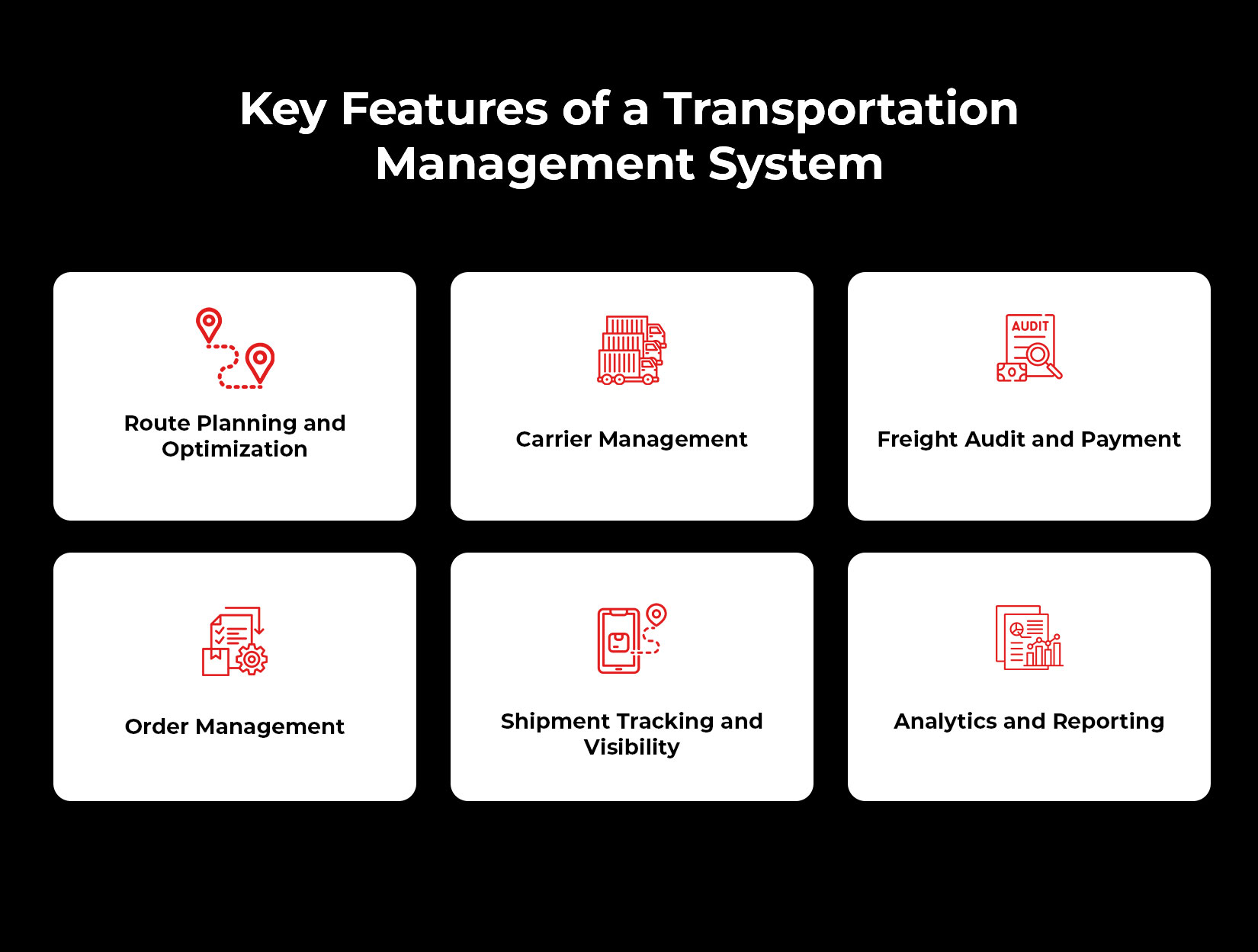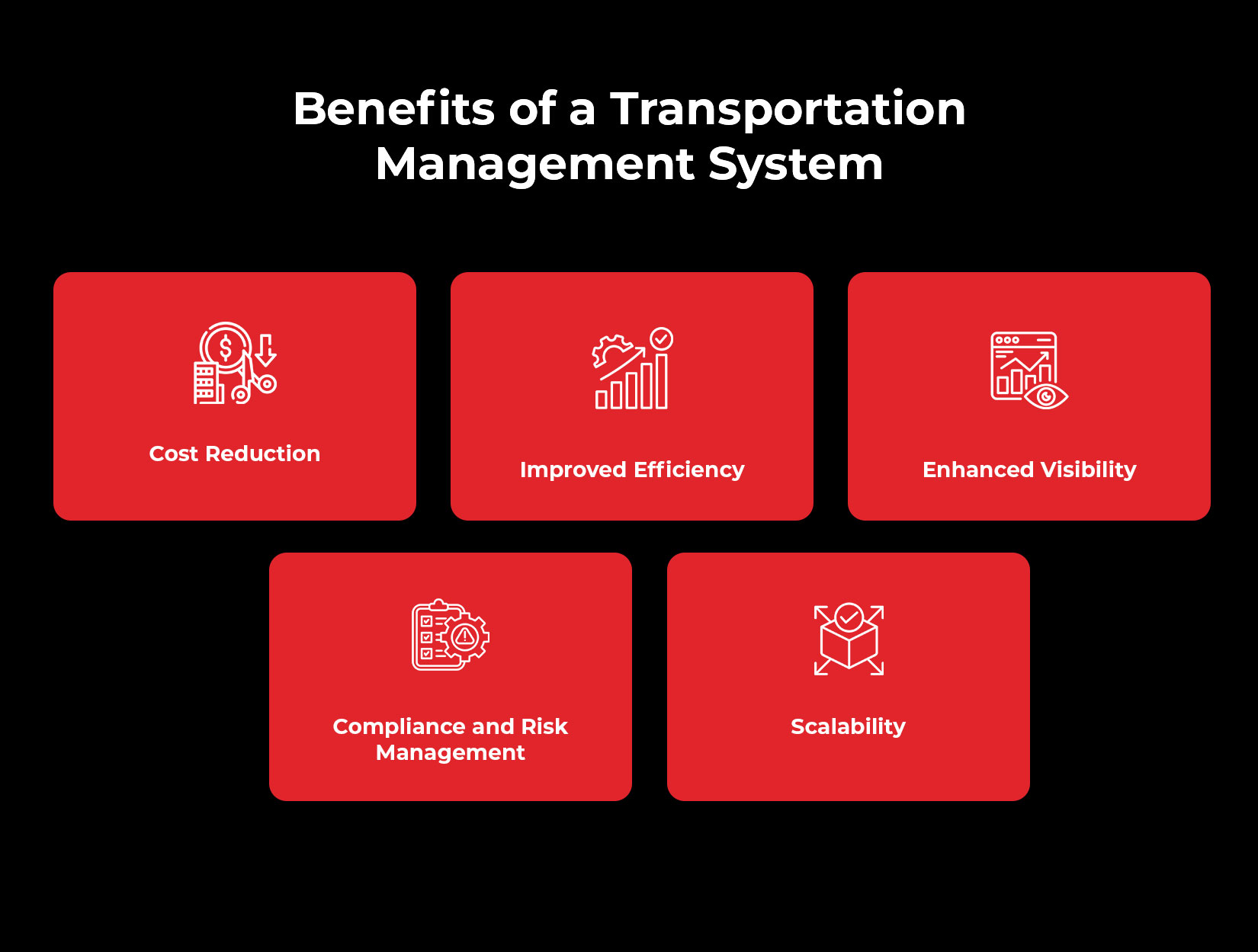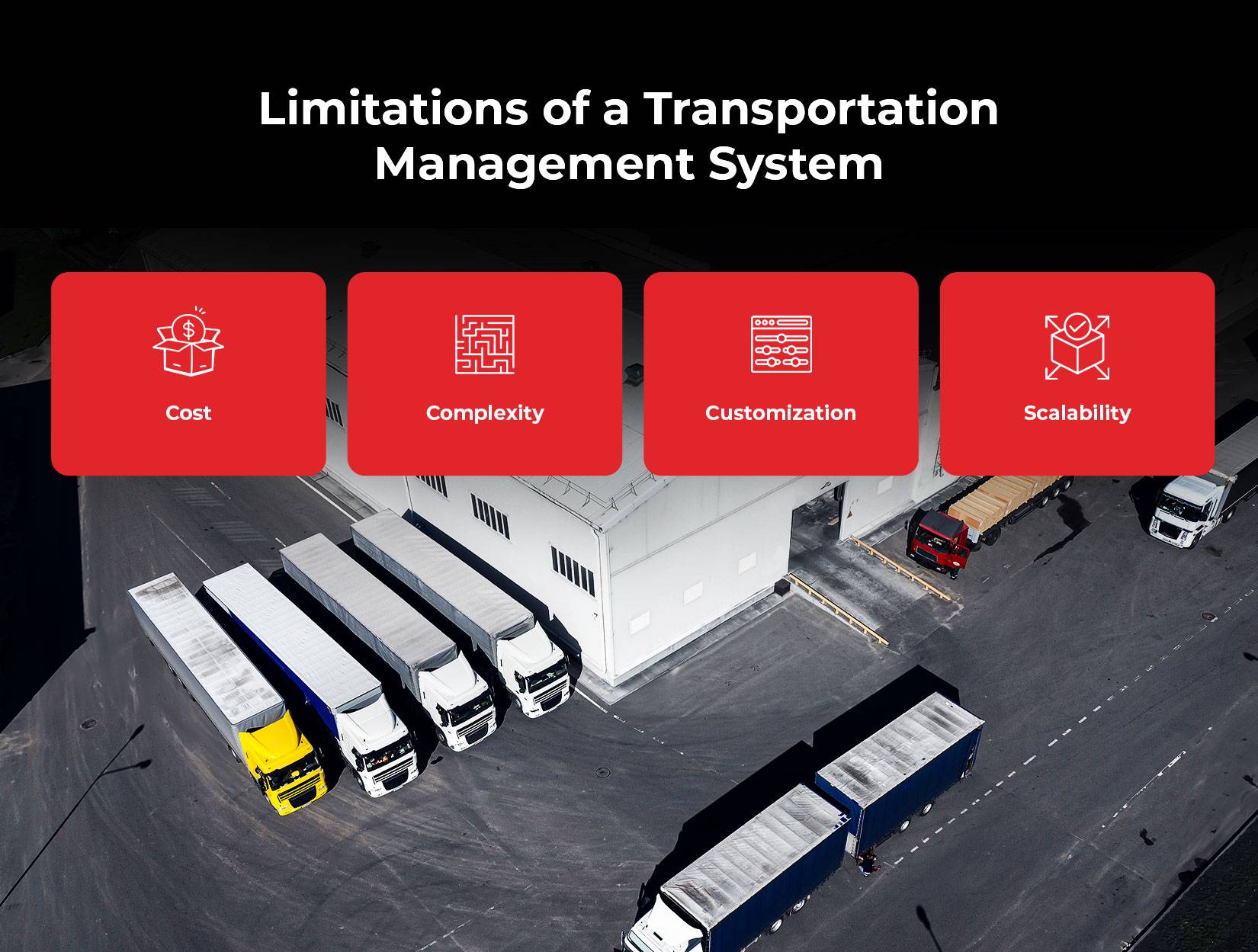
Transportation Management System (TMS): A Comprehensive Guide
Efficient transportation management is crucial in the fast-paced world of logistics. A Transportation Management System (TMS) stands at the forefront, enabling organizations to streamline their transportation operations, reduce costs, and enhance customer satisfaction. This blog delves into the intricacies of TMS, exploring its features, benefits, and the evolving technologies that are shaping its future.
What is a Transportation Management System (TMS)?
A Transportation Management System (TMS) is a software platform designed to plan, execute, and optimize the physical movement of goods. It serves as a vital component of supply chain management, ensuring that shipments are handled in the most efficient and cost-effective manner possible. A TMS integrates various logistics functions into a single platform, covering order management, carrier selection, route planning, and freight auditing. This integration provides visibility and control over the entire transportation process.
A TMS can be a standalone system or part of a larger Enterprise Resource Planning (ERP) system. It is used by shippers, carriers, third-party logistics providers (3PLs), and freight brokers to manage both inbound and outbound shipments.
How Does a TMS Work?

Understanding how a TMS works is essential for grasping its full potential. At its core, a TMS is a data-driven platform that integrates with various systems to manage transportation activities. Here’s a step-by-step overview of how a TMS typically functions:
1. Order Entry:
The process begins with order entry, where customer orders are captured and fed into the TMS. This can be done manually or automatically through integration with order management systems.
2. Planning and Optimization:
Once orders are entered, the TMS analyzes them to determine the most efficient way to fulfill them. This involves route planning, carrier selection, and load optimization, ensuring that shipments are consolidated to maximize efficiency.
3. Execution:
After planning, the TMS executes the transportation plan by tendering shipments to selected carriers. This involves generating shipping documents, scheduling pickups, and coordinating with carriers to ensure that shipments are dispatched on time.
4. Tracking and Monitoring:
Throughout the transportation process, the TMS provides real-time tracking and monitoring of shipments. This allows logistics managers to stay informed about the status of each shipment and make adjustments if necessary.
5. Freight Audit and Payment:
After the shipment is delivered, the TMS automates the freight audit and payment process. This involves matching invoices with shipment details, auditing freight bills for accuracy, and processing payments to carriers.
6. Reporting and Analysis:
Finally, the TMS generates reports and provides analytics on transportation performance. This data is invaluable for identifying trends, assessing carrier performance, and making informed decisions about future transportation strategies.
Who Uses Transportation Management System?
TMS systems are used by a wide range of organizations across various industries. Here are some of the key users of TMS:
1. Shippers:
Manufacturers, retailers, and distributors use TMS to manage the transportation of their products. By optimizing routes, selecting the best carriers, and ensuring timely deliveries, shippers can reduce costs and improve customer satisfaction.
2. Carriers:
Transportation companies, including trucking firms, rail operators, and air freight providers, use TMS to manage their fleets and optimize their operations. A TMS helps carriers maximize asset utilization, reduce fuel consumption, and improve service levels.
3. Third-Party Logistics Providers (3PLs):
3PLs use TMS to manage transportation services on behalf of their clients. A TMS allows 3PLs to offer value-added services such as route optimization, real-time tracking, and freight audit and payment management.
4. Freight Brokers:
Freight brokers operate as mediators between shippers and carriers. They use TMS to match shippers with the most suitable carriers, negotiate rates, and manage the transportation process from start to finish.
Key Features of a Transportation Management System

A robust TMS offers a wide array of features, each designed to address specific aspects of transportation management. The following are some of the key features that make TMS an indispensable tool for logistics professionals:
1. Route Planning and Optimization
One of the primary functions of a TMS is to determine the most efficient routes for shipments. By considering factors such as distance, traffic conditions, fuel costs, and delivery windows, a TMS can significantly reduce transit times and fuel consumption. Advanced TMS platforms use algorithms and machine learning to continuously refine route planning.
2. Carrier Management:
A TMS allows users to compare different carriers based on cost, service levels, and performance. This feature ensures that shippers can select the best carrier for each shipment, balancing cost and reliability. It also provides tools for managing carrier contracts and monitoring carrier compliance.
3. Freight Audit and Payment:
Automating the freight audit and payment process is another critical feature of a TMS. By automating invoice matching, auditing freight bills, and managing payments, a TMS reduces errors, eliminates overpayments, and improves financial control.
4. Order Management:
TMS platforms integrate with order management systems to ensure that all transportation activities are aligned with customer orders. This feature allows for real-time visibility into order status, ensuring that shipments are dispatched and delivered on time.
5. Shipment Tracking and Visibility:
Real-time tracking is essential for maintaining visibility over the transportation process. A TMS provides real-time updates on the location and status of shipments, allowing logistics managers to respond proactively to any disruptions or delays.
6. Analytics and Reporting:
Data-driven decision-making is a key advantage of using a TMS. Advanced analytics and reporting tools within a TMS provide insights into transportation performance, helping organizations identify areas for improvement and optimize their operations.
Cloud TMS and New Technologies
The evolution of TMS has been significantly influenced by the advent of cloud computing and new technologies. Cloud-based TMS platforms offer several advantages over traditional on-premise systems, including scalability, flexibility, and lower upfront costs.
1. Cloud TMS:
Cloud-based TMS platforms are hosted on remote servers and accessed via the internet. This removes the need for organizations to invest in expensive hardware and infrastructure. Cloud TMS also offers greater flexibility, allowing users to access the system from anywhere with an internet connection. According to Gartner, the adoption of cloud TMS has been steadily increasing, with over 50% of TMS deployments expected to be cloud-based by 2025.
2. Artificial Intelligence (AI) and Machine Learning (ML):
AI and ML are transforming the way TMS platforms operate. These technologies enable TMS to learn from historical data, predict trends, and make more informed decisions. For example, AI-driven route optimization algorithms can dynamically adjust routes based on real-time traffic conditions, weather patterns, and other variables.
3. Internet of Things (IoT):
IoT devices, such as GPS trackers and sensors, are being integrated into TMS platforms to enhance visibility and tracking capabilities. IoT enables real-time monitoring of shipments, providing detailed information on location, temperature, and condition. This level of visibility is particularly valuable for industries that require precise control over their supply chains, such as pharmaceuticals and perishables.
4. Blockchain:
Blockchain technology is being explored as a means to enhance transparency and security in transportation management. By creating a decentralized ledger of all transactions, blockchain can reduce the risk of fraud, streamline documentation, and improve trust between shippers, carriers, and 3PLs.
Check-out: How AI in Transportation Management Systems Ensures Maximum Efficiency
Benefits of a Transportation Management System

Implementing a TMS can yield significant benefits, transforming the way organizations manage their transportation activities. Here are some of the valuable benefits to know:
1. Cost Reduction:
By optimizing routes, improving carrier selection, and automating freight audits, a TMS can significantly reduce transportation costs. According to a report by ARC Advisory Group, companies that implement a TMS can achieve freight cost savings of 8-10% on average.
2. Improved Efficiency:
A TMS streamlines the entire transportation process, reducing manual effort and minimizing errors. This capability results in faster order execution and enhanced customer satisfaction.
3. Enhanced Visibility:
Real-time tracking and visibility are crucial for managing transportation effectively. A TMS provides complete visibility over shipments, allowing organizations to monitor progress and address issues as they arise.
4. Compliance and Risk Management:
Regulatory compliance is a critical concern in the logistics industry. A TMS helps organizations stay compliant with industry regulations by automating documentation and ensuring that all shipments meet regulatory requirements. It also assists in managing risks by providing tools for monitoring carrier performance and ensuring that contracts are adhered to.
5. Scalability:
As businesses grow, so do their transportation needs. A TMS is scalable, allowing organizations to handle increased shipment volumes without compromising efficiency. This scalability makes it a valuable asset for companies of all sizes, from small businesses to large enterprises.
Limitations of a Transportation Management System

While TMS systems offer numerous benefits, they are not without limitations. Some of the key challenges associated with TMS systems include:
1. Cost:
Implementing a TMS can be expensive, particularly for small businesses. The initial investment in software, hardware, and training can be significant, and ongoing maintenance costs can add to the financial burden.
2. Complexity:
TMS systems can be complex to implement and operate, especially for businesses with limited technical expertise. The integration of a TMS with existing systems, such as ERP or warehouse management systems (WMS), can be challenging and time-consuming.
3. Customization:
While many TMS platforms offer a range of features, they may not always meet the specific needs of every business. Customizing a TMS to suit unique requirements can be costly and may require additional development time.
4. Scalability:
Some TMS systems may struggle to scale with the growing needs of a business. As companies expand their operations, they may find that their TMS is no longer capable of handling the increased volume of shipments or the complexity of their transportation network.
Best Transportation Management System
A robust TMS offers visibility across all stages of the supply chain. When integrated with global trade management features, it can also pinpoint potential delays, such as those caused by customs and trade regulations.
1. LogiNext:
LogiNext’s TMS offers seamless delivery and end-customer experience with end-to-end transportation planning. This cloud-based, configurable system integrates easily, adapts to customer needs, and meets compliance and sustainability goals, helping automate processes and outpace competitors.
2. FreightPOP:
FreightPOP, a top 2024 TMS, serves 57% medium and 37% small-scale businesses globally. With a single login, it simplifies inbound and outbound freight management, reducing data entry, saving time, minimizing errors, and enabling analytics for smarter decisions across the logistics cycle.
3. OnFleet:
OnFleet’s TMS, serving couriers, retailers, and on-demand startups, boosts local delivery efficiency by 40% with route optimization. Featured in Gartner’s 2024 Hype Cycle, it offers driver-friendly onboarding, mobile apps, real-time visibility, and full transparency.
4. Tailwind TMS:
Tailwind’s cloud-based TMS, a top web-based system in 2024, is versatile and scalable, ideal for mid-size businesses and growing OTR trucking companies. With no setup fee or contract, and a free trial, it streamlines customer, operations, and accounting management for smoother logistics.
5. Omnitracs:
Omnitracs’ TMS ensures pocket-friendly distribution and reduced routing time, key to success in the transportation industry. It supports multiple platforms, offers extensive integrations, and provides a free trial for businesses to explore its features and capabilities.
Conclusion
In conclusion, a Transportation Management System (TMS) is an essential tool for modern logistics, providing organizations with the ability to optimize their transportation operations, reduce costs, and enhance overall efficiency. From robust features like route planning, carrier management, and freight audit automation to the integration of cutting-edge technologies like AI, IoT, and blockchain, TMS platforms such as LogiNext are continually evolving to meet the demands of a dynamic and competitive market.
While TMS systems offer significant advantages, including cost reduction, improved efficiency, and enhanced visibility, they also come with challenges such as high implementation costs, complexity, and the need for customization. Understanding these factors is crucial for businesses considering a TMS investment.
The future of TMS looks promising, with cloud-based platforms and new technologies driving innovation and accessibility. As more organizations embrace these advancements, TMS will continue to play a pivotal role in shaping the logistics landscape, helping businesses navigate the complexities of transportation management and achieve their operational goals. Click on the red button below to book a demo with LogiNext and shape your logistics landscape with their Transportation Management System.
130







@LogiNext